By Sarah Saad
Egypt’s victory in the October 1973 War was an important step for the Arab country to regain Sinai which was occupied by Israel in 1967. The war was invaluable in creating a geopolitical paradigm which fostered negotiations between the Arabs and Israel.
On the 51st anniversary of the war, the Egyptian Mail dedicates this section to capture the testimonies and memoirs of those who were on the frontline during the war, fighting to make the aspired crossing of the Suez Canal a reality.
Ibrahim al-Rifa’i
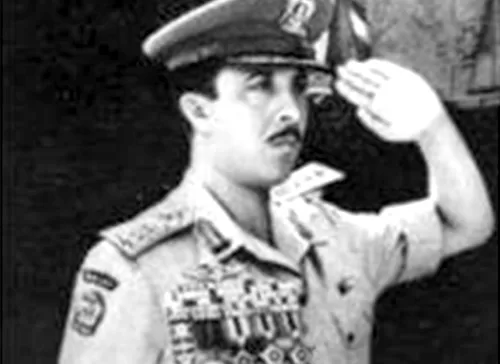
With the first airstrike and the resounding cries of ‘God is Great’, the commando battalion, led by the heroic Ibrahim Al-Rifa’i, launched three helicopters to destroy oil wells in the Bala’eem region, east of the canal, depriving the enemy of their use. The troops successfully completed their mission, and the group’s operations continued with remarkable success, targeting enemy positions in Sharm El-Sheikh and Ras Mohammed.
On October 7th, they executed a successful raid on Al-Tor Airport, destroying several aircraft and throwing the Israeli command into disarray, thanks to the speed and precision of the Egyptian commandos’ consecutive strikes.
By October 18th, the heroic group was tasked with infiltrating enemy positions west of the canal and reaching the Deversoir area to destroy the bridge the enemy had constructed there for the movement of its troops across it.
Col. Mohamed Zard
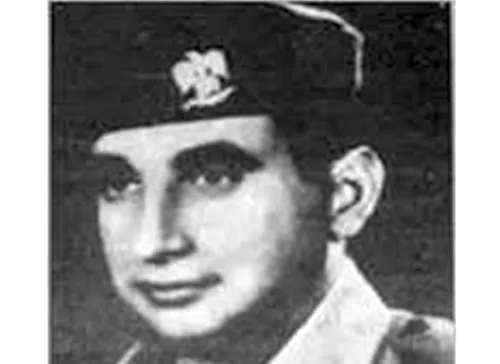
After the Egyptian Armed Forces crossed the Suez Canal, the largest water barrier in history, all fortifications were destroyed, except for one heavily fortified position. This remaining stronghold was exceptionally reinforced and seemed to be designated for high-ranking Israeli officers.
Egyptian soldiers had previously failed to breach it, as it was constructed with iron reinforcements deeply embedded in the ground and featured a small door with a narrow ventilation opening above it.
Col. Mohamed Zard volunteered to lead the assault on this stronghold, one he had attempted to attack during the War of Attrition.
With remarkable courage, Col. Zard rushed towards the position, skilfully evading the intense Israeli gunfire. He climbed atop the stronghold and managed to throw a grenade through the ventilation opening. Moments later, to the amazement of his unit, Zard squeezed his body through the same narrow opening.
While attempting to infiltrate the stronghold, Zard came under heavy fire from the Israeli soldiers inside, sustaining severe injuries that exposed his intestines.
His comrades initially believed he had been killed. However, within seconds, the door of the stronghold opened from the inside, and Col. Zard emerged, holding his intestines with his left hand, while using his right to force the door open. He pressed forward, shouting, “Allahu Akbar! Allahu Akbar! Allahu Akbar!” His men quickly followed, and a fierce hand-to-hand battle ensued. The sounds of Israeli soldiers’ cries echoed through the air, and soon after, the stronghold was captured by Zard’s forces.
Lion of Sinai
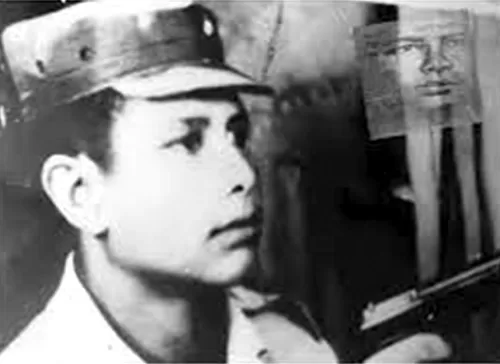
The story of this courageous soldier remained undisclosed for 23 years until an Israeli soldier revealed it. Global news agencies subsequently reported the account of this martyr, bestowing upon him the title “Lion of Sinai.”
This story dates back to 1996, when Sayed Zakaria was reported missing in action during the war. That year, an Israeli soldier confessed, for the first time, to the Egyptian ambassador in Germany that he had killed Egyptian soldier Sayed Zakaria, describing him as an exceptional fighter who fought valiantly until his death after killing 22 Israeli soldiers single-handedly.
The Israeli soldier delivered the belongings of this Egyptian hero to the ambassador, which included his military dog tags and a letter he had written to his father prior to his martyrdom. The soldier said he had preserved these items in appreciation of this hero. After the incident, he personally buried Zakaria and fired 21 shots into the air as a salute to the martyrs.
Ubiquitous and iconic picture
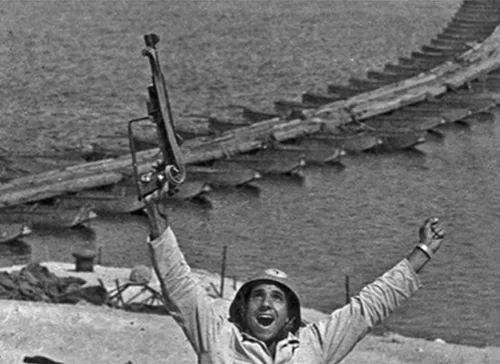
The picture shows an Egyptian soldier raising his gun in defiance, joy and pride upon getting to the eastern side of the Suez Canal.
The photograph of hero Abdul Rahman el-Qadi from Sohag was captured by the late Shawky Moustafa, a photojournalist working for the state-owned Dar El-Helal at the time, during the historic moment of crossing the Suez Canal and breaching the Bar-Lev Line. It encapsulated genuine and heartfelt emotions at a crucial juncture in Egypt’s history — the moment of victory.
Battle of Ras Al-Esh

In Ras Al-Esh to the south of Port Fouad, there was a limited Egyptian commando force that consisted of 30 fighters led by Lt. Sayed el-Sharqawi.
The Israeli force that consisted of ten tanks attacked the Egyptian commando force, which defended its position and managed to destroy three enemy tanks.
The heroism exhibited during the Battle of Ras Al-Esh carries a significant symbolic weight in the history of our armed forces, serving as an emblem of hope for restoring the morale of our army in the wake of the June 1967 defeat.This area has become a testament to the resilience of the commando fighters.
El-Sharqawi’s determination and steadfastness until the night of June 30, 1967, exemplified remarkable defiance.
That battle was considered the first step on the way of liberation of the land and proved that Egyptian soldiers, despite the defeat, did not lose the will of fighting and offered an example of perseverance and skill in fighting and clinging to the land.
Mastermind behind assault on Israeli defensive line
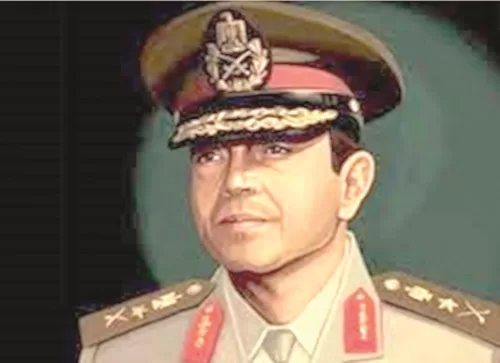
Gen. Saadeddin El-Shazli, a war hero and former chief of staff of the armed forces, was the mastermind behind the Egyptian assault on the Israeli defensive line during the October War.
He developed the crossing plan and managed the bridging operations. During the Tripartite Aggression in 1956, he commanded the 75th Parachute Battalion. In 1960, he undertook a mission in Congo to prevent Belgium from reoccupying it, leading the Arab Battalion there – the first deployed for foreign missions during the 1967 war.
Shazly was present with his forces, comprising two infantry battalions in central Sinai, when communications with command were severed following the destruction of the air force.
Nevertheless, he made a bold and courageous decision to advance eastward into Israeli territory, reaching the Negev Desert, where he remained for two days before receiving orders for an immediate withdrawal.
With remarkable skill, Shazly led his forces across Sinai, ultimately reaching the western bank of the canal, making him the last Egyptian commander to withdraw from the region.
This manoeuvre earned him widespread popularity in the Egyptian army, resulting in his appointment as commander of the Special Forces, Commandos, and Paratroopers, followed by his leadership of the Red Sea Military Region.
His competence made President Anwar el-Sadat select him as chief of staff of the Egyptian Army, ensuring that Shazly’s name remains immortalised and his contributions recognised.
Nawal al-Saeed

Those who knew him describe how he attentively listened to every idea suggested to him, regardless of whether it came from a low-ranking soldier or officer.
During the final days of the battle, when the Third Army was encircled, Nawal al-Saeed played a pivotal strategic role in breaking the siege. He accomplished this by heeding a lieutenant in his military unit, who would later rise to the rank of Maj. Gen. Gamal Hawash. The proposal was to replace the 3-tonne Zal vehicles with Kazzaz, a change that not only saved time but also increased the volume of supplies reaching the besieged army. Additionally, al-Saeed was responsible for ensuring a consistent supply of fuel for military equipment through well-organised and extended supply lines.
Lion of the Seas
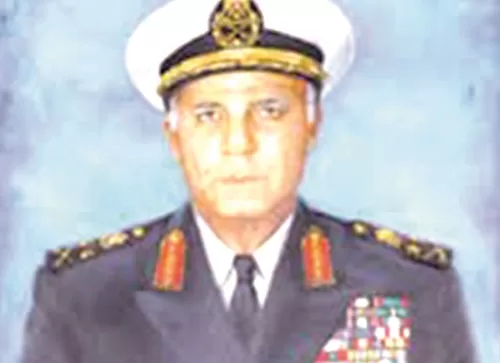
In 1967, the only branch of the Egyptian army that reported zero casualties was the Navy, commanded by Adm. Fouad Zikri, widely known as the “Lion of the Seas.” He had been appointed commander of several naval destroyers before assuming leadership of the Naval Operations Division in 1963. After the events of June 1967, he became the commander of the Navy, which accomplished several notable feats, including the confrontation with the destroyer Eilat, the attack on the port of Eilat in 1969, a second assault on the port in February 1970, and a third operation against Eilat in May 1970.
During the October War, Adm. Zikri distinguished himself as the first Egyptian naval commander to lead a significant military engagement and emerge victorious. His forces effectively besieged the Bab al-Mandab Strait, cutting off supply lines to Israel from the east and imposing a substantial economic blockade on the country.
Following the conclusion of the battle, he expressed a desire to step down and advocated for the promotion of new personnel within the Egyptian Navy.
Although his request was initially denied multiple times, his persistence ultimately led to approval. He was one of five commanders from the October War for whom legislation was enacted, ensuring their continued service in the Egyptian army for the remainder of their lives.



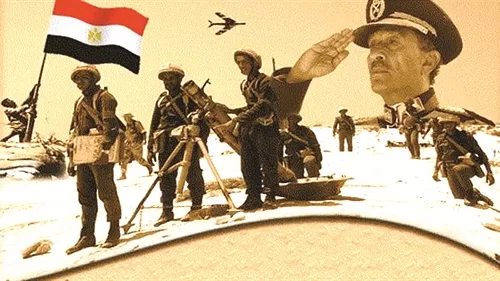


Discussion about this post